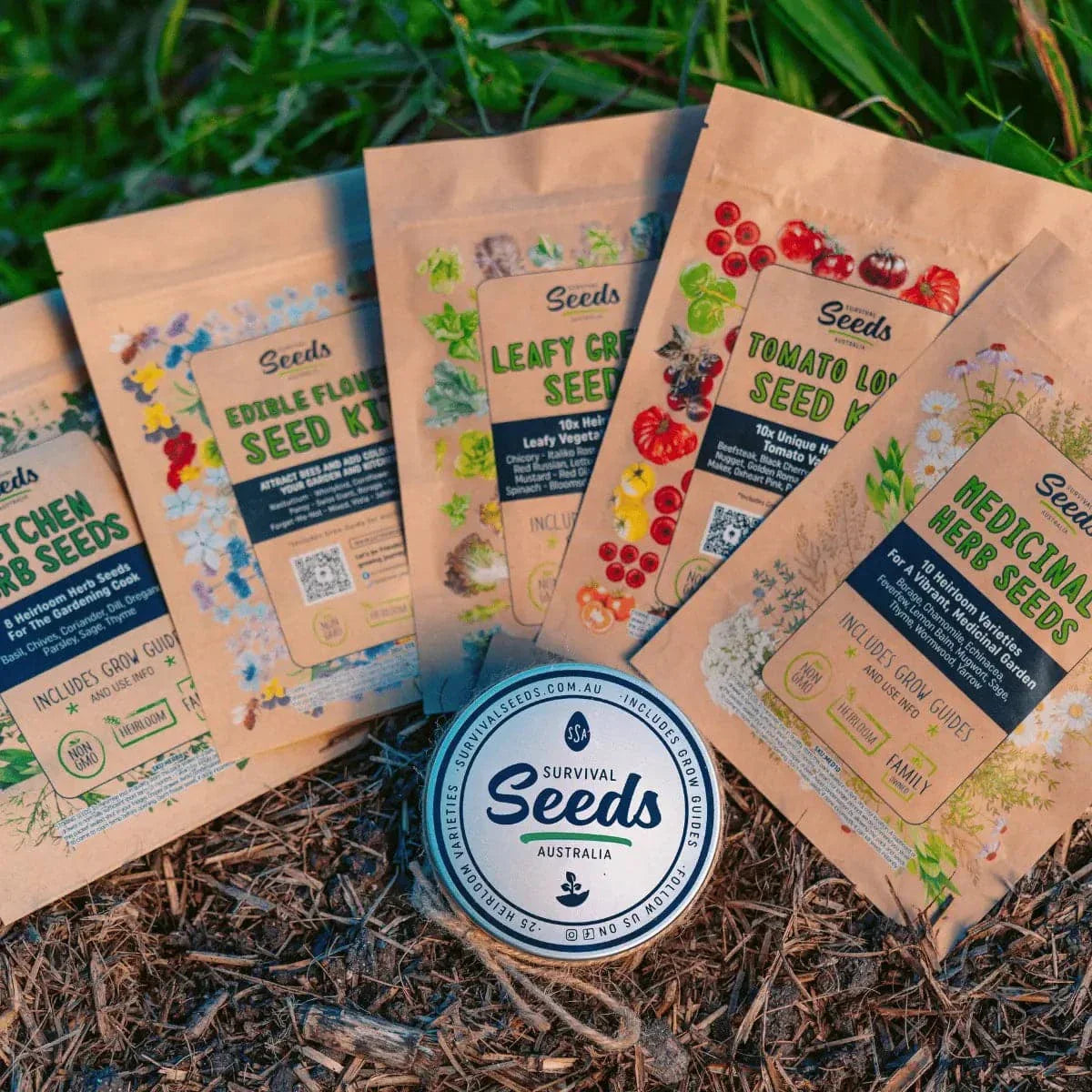Growing Corn
Corn, a staple crop enjoyed worldwide, is a versatile and rewarding plant to grow in your Australian garden. Whether you have a large backyard or limited space in pots, you can experience the joy of cultivating your own corn.
In this guide, we will walk you through the process of growing corn, from planting to harvest, providing you with essential tips and techniques to ensure a successful crop.
When to Grow Corn in Australia
Choosing the right time to plant corn is crucial for its growth and development. In Australia, the optimal planting time for corn varies depending on the region and climate.
Here are some general guidelines:
- Tropical and Subtropical Regions: In these regions, corn can be planted from September to February, taking advantage of the warmer temperatures.
- Temperate Regions: In temperate regions, corn is best planted during the spring months, from September to December.
- Cool and Alpine Regions: In cooler areas, it is recommended to plant corn during the warmer months of October to December.
To ensure a continuous supply of fresh corn, consider staggering your plantings at two to three-week intervals.
Corn Growth Stages
Understanding the growth stages of corn can help you monitor its progress and take appropriate care.
Here are the key growth stages:
- Emergence: This stage begins with the seedling breaking through the soil surface and continues until the first leaf appears.
- Vegetative Growth: This stage covers the development of leaves, stems, and roots. The corn plant grows taller, producing more leaves and forming a strong root system.
- Tasseling: At this stage, the tassel emerges at the top of the plant, releasing pollen.
- Silking: The silks, which emerge from the ears, capture the pollen for successful pollination and kernel development.
- Ear Development: The ears begin to develop and fill with kernels.
- Milk Stage: The kernels are milky and soft. This is the best time to harvest sweet corn.
- Dough Stage: The kernels start to harden and develop starch.
- Dent Stage: A small dent forms at the top of the kernel, indicating the corn is nearing maturity.
- Maturity: The corn kernels are fully formed, and the husks begin to dry and turn brown.
How to Grow Corn in Pots
If you have limited garden space, growing corn in pots is a viable option. Follow these steps for successful corn cultivation in pots:
- Pot Selection: Choose a large pot with a minimum diameter of 30 cm (12 inches) to accommodate the corn plant’s size and root system. Ensure the pot has drainage holes to prevent waterlogging.
- Potting Mix: Fill the pot with a quality potting mix enriched with compost or well-rotted manure. Corn requires fertile, well-draining soil for optimal growth.
- Seed Planting: Sow corn seeds directly into the potting mix at a depth of around 2.5 cm (1 inch). Plant multiple seeds, spacing them about 15 cm (6 inches) apart.
- Watering and Sunlight: Water the potting mix thoroughly after planting and keep it consistently moist. Place the pot in a location that receives full sun, ensuring the corn plants get at least 6 to 8 hours of sunlight daily.
- Fertilisation: Apply a balanced, slow-release fertiliser according to the manufacturer’s instructions to provide essential nutrients for the corn plants.
- Support: As the corn plants grow, they may require support to prevent bending or breaking. Insert a sturdy stake or bamboo cane near each plant and tie the stem gently for support.
- Thinning and Transplanting: Once the corn seedlings have developed a few leaves, thin them out by removing weaker seedlings, leaving the strongest ones to grow. If the pot becomes overcrowded, consider transplanting the excess seedlings to another pot.
- Maintenance: Regularly water the corn plants to keep the soil consistently moist. Monitor for pests and diseases, and take appropriate measures to prevent or treat any issues.
- Harvesting: Harvest the corn when the kernels are fully formed, and the husks have dried and turned brown. Gently twist the ears downward until they detach from the stalk.
How to Grow Corn from a Cob
Growing corn from a cob is a fun and easy way to start your own corn plants.
Here’s how to do it:
- Choose a mature, healthy ear of corn. Look for an ear with plump, well-formed kernels that are tightly packed together.
- Remove the husk from the ear of corn, being careful not to damage the kernels. If there are any damaged or mouldy kernels, remove them as well.
- Fill a shallow container or tray with water, and place the corn cob in the water with the pointy end facing down. Make sure the entire cob is submerged in the water.
- Place the container in a warm, sunny location, such as a windowsill or a greenhouse. Change the water every few days to keep it fresh.
- After about a week, you should start to see roots emerging from the base of the cob. Keep the cob in the water until the roots are at least an inch long.
- Once the roots are established, transplant the corn cob into a large pot or directly into your garden bed. Choose a spot that receives plenty of sunlight and has well-draining soil. Make a hole in the soil that is deep enough to accommodate the entire cob.
- Cover the cob with soil, leaving the tip exposed. Water the soil well, and keep it moist but not waterlogged.
- As the corn grows, be sure to provide plenty of water and fertiliser. Corn is a heavy feeder and requires regular fertilisation to grow properly.
- Harvest your corn when the ears are filled out and the silks have turned brown. Twist the ear downward until it breaks off the stalk. If the kernels are milky, the corn is ready to eat immediately. If the kernels are starchy, allow the corn to dry on the stalk for a few weeks, and then harvest and store the dried kernels for later use.
In conclusion, growing corn from a cob is a simple and rewarding project that anyone can do. With a little care and attention, you can enjoy fresh, homegrown corn on the cob in just a few months.
How to Plant Corn in Blocks
Planting corn in blocks, also known as the “block method,” improves pollination and ensures more consistent ear development.
Follow these steps to plant corn in blocks:
- Site Preparation: Choose a sunny location in your garden with well-draining soil. Remove any weeds or debris and amend the soil with compost or well-rotted manure to improve fertility.
- Spacing: Instead of planting corn in long rows, create small blocks or clusters of corn plants. Space the blocks about 60-90 cm (24-36 inches) apart, leaving enough room for the plants to grow and ensuring adequate airflow between them.
- Planting: Plant corn seeds in each block, spacing them about 30 cm (12 inches) apart in all directions. Plant multiple seeds in each spot and thin them out later to leave the strongest seedling.
- Watering and Care: Water the soil thoroughly after planting and keep it consistently moist. Mulching around the plants can help retain moisture and suppress weed growth. Monitor the plants for watering needs during hot and dry periods.
- Fertilisation: Apply a balanced fertiliser before planting and side-dress with nitrogen-rich fertiliser when the corn plants reach about 30 cm (12 inches) in height. Follow the instructions on the fertiliser package for the recommended rates.
- Thinning: Once the corn seedlings have developed a few leaves, thin them out to leave the strongest plant in each spot. Remove the weaker seedlings, ensuring each plant has enough space to grow and receive adequate sunlight.
- Maintenance: Regularly monitor the corn plants for pests and diseases. Take preventive measures and address any issues promptly to ensure the health and vigour of the crop.
- Pollination: Corn plants rely on wind or manual pollination to ensure proper kernel development. Gently shake the plants when the tassels release pollen to encourage cross-pollination between the plants.
- Harvesting: Harvest the corn when the kernels are fully formed and plump. Check for dry and brown husks and gently twist the ears downward until they detach from the stalk.
Conclusion
Growing corn in Australia can be a rewarding experience, allowing you to enjoy the sweet and delicious flavours of homegrown corn. Whether you choose to plant corn in the ground, pots, or use alternative methods like growing from cobs or creating blocks, following the right techniques and providing optimal care will lead to a successful harvest. Embrace the joy of gardening, savour the taste of fresh corn, and elevate your culinary creations with this versatile and nutritious crop. Happy corn-growing!










